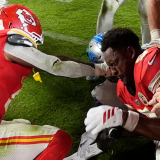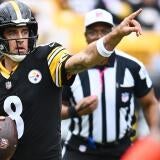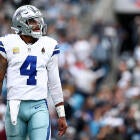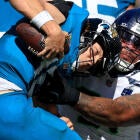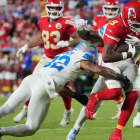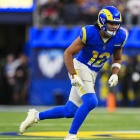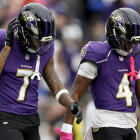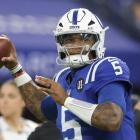NFL sign-stealing: 49ers' Robert Saleh accuses Jaguars of using 'really advanced' system; Liam Coen responds
The McVay coaching tree apparently is very good at this
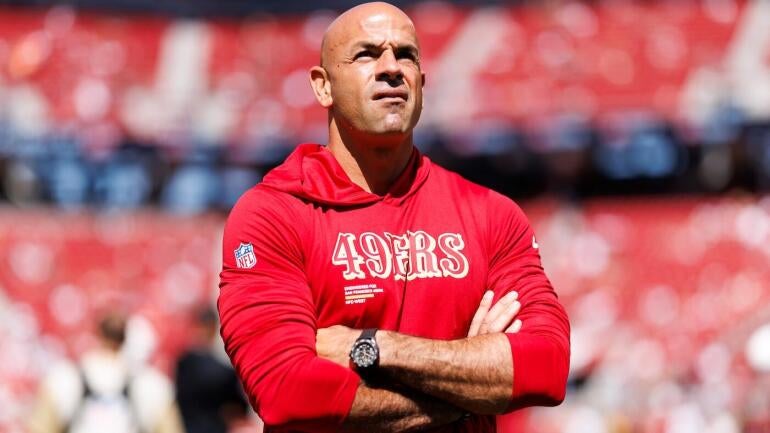
When you hear the phrase "sign-stealing" in football, your mind likely immediately goes to Jim Harbaugh's Michigan Wolverines and how that program was hit with major penalties for its expansive operation led by the infamous Connor Stalions. But the truth is, sign-stealing is not an uncommon thing in sports. It's just that most programs and franchises don't go to the lengths Stalions did to uncover the signals of Michigan's opponents.
San Francisco 49ers defensive coordinator Robert Saleh brought up the subject during his media availability Thursday, ahead of Sunday's game with the Jacksonville Jaguars. Saleh noted that Jacksonville has a "signal-stealing-type system" that is common with guys from Sean McVay's coaching tree -- such as first-year Jaguars coach Liam Coen.
"Liam and his staff, a couple guys coming from Minnesota, they've got a -- legally -- a really advanced signal-stealing-type system where they always find a way to put themselves in an advantageous situation," Saleh said. "They do a great job of it. They formation you to just try to find any nugget they can. So we've got to be great with our signals and we've gotta be great with our communication to combat some of the tells that we might give on the field."
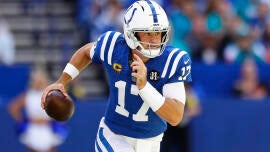
Saleh said he's run into this with other McVay disciples, such as Kevin O'Connell with the Minnesota Vikings.
"They're almost elite in that regard. That whole entire tree from Sean [McVay] to Kevin O'Connell to all of those guys, they all do it," Saleh said. "There's challenges. They're going to catch us in some situations where they have the advantage and we've just got to play sound, fundamental football and do our best to outexecute them."
Saleh emphasized that there is nothing illegal about this practice, and it's not an uncommon thing. It just happens that this specific group of offensive minds is particularly good at it.
Saleh said the signals could be swiped from people on the sideline or it could just be a player's individual hand signals. Whatever these teams are taking away, it's a system that gets them into a "very advantageous position multiple times during the course of a game."
"It's the ultimate trick," Saleh said.
Coen, who is in his first year as a head coach, has the Jaguars off to a 2-1 start. He spent four years under McVay with the Los Angeles Rams, working with wide receivers, quarterbacks and served as offensive coordinator in 2022.
The 49ers, meanwhile, are off to a 3-0 start and are 3.5-point home favorites for Sunday's game at FanDuel Sportsbook.
Liam Coen responds: Jaguars just work hard
Asked to address Saleh's comments regarding sign-stealing, Coen first deflected said questions on Friday: "I'm not gonna speak on that fully right now," he told reporters with a smile. "We have a huge game for us coming up, we've got a great defense that we've got to go and attack and that's where our whole mindset and mentality is right now. ... Again, we're really trying to focus on a darn good defense."
Later asked to clarify his approach when it comes to what Saleh referenced, Coen suggested Jacksonville's designs aren't unusual: "We [are] typically by formation, by game plan, by working really hard as a coaching staff throughout the week, trying to get indicators by your formation, motion, shift, pre-snap; those are the things you're trying to do as a coach if you're trying to put your players in the best position to be successful. ... It's a lot of hard work that goes into game-planning."
What is legal vs. illegal sign-stealing in the NFL?
All NFL teams are allowed to use broadcast tape and All-22 film, which is recorded by each team from designated areas of the field, to "break codes" or learn opposing teams' signs or tendencies, as Sports Illustrated reported. Coaches are also permitted to incorporate knowledge of signals observed live from the press box during games, per Conor Orr, who notes that sign-stealing branches into illegal territory when teams film signals from unauthorized areas, such as the sideline or press box.
What else is used to steal signs in the NFL?
"Coaches also pore over television tape and database any words that are picked up on the field microphones," Conor Orr reports for Sports Illustrated. "Conversely, defensive coordinators will use television tape of quarterback cadence and mimic it during the week to get a jump on the ball, in addition to matching hand signals and code words to plays from television tape and the All-22 film."
How do the Jaguars use their formations?
One of the things that Saleh said about the Jaguars is that they can "formation you" to learn your signals on any given snap. And the Jaguars can indeed do that because no matter what formation they're in, they have played pretty similarly to date, so they're not really tipping anything by how they align themselves at the snap.
First of all, they have a pretty equal distribution of formations so far this season, according to TruMedia. They've aligned in 2x2 formations (i.e. two pass catchers to each side of the line of scrimmage) on 98 snaps and 3x1 formations (i.e. three receivers to one side and one receiver to the other) on 75 snaps. That's around a 55-45% split. (They also have seven snaps in 3x2 formations.)
They also have pretty equal run-pass splits in both of those alignments: they're passed 56% of the time out of 2x2 looks and 58% of the time in 3x1. Those rates are both within a few percentage points of the league average out of those formations.
When you're hewing that close to both what you do out of one formation as opposed to the other, and to what the rest of the league does out of those formations, it's hard for defenses to get a read on you. But you can get a read on them by doing things like using motion before or at the snap at a high rate, which the Jaguars also do.
They've utilized motion on 64% of their snaps, per TruMedia, which is the fifth-highest rate in the NFL. When you move a player from one side of the formation to the other, or from the inside to outside or outside to inside alignment, you can force the opponent to declare its coverage scheme if they're not disguising it well enough. That can happen through their own shifts at the snap or by looking at the hand signals second-level defenders use to make adjustments based on your motion.
Do the Jaguars have tendencies of their own?
While Jacksonville doesn't really tip its hand based on formation, it might do so based on personnel.
According to TruMedia, the Jaguars trot out 11 personnel (one running back, one tight end, three receivers) on around 70% of their snaps, which ranks 10th in the NFL. They use 12 personnel (one back, two tight ends, two receivers) on 21% of snaps, which ranks 19th.
And they have significant run-pass splits based on their personnel groupings. In 11 personnel, the Jags have called a pass 68% of the time and a run 32% of the time. When in 12 personnel, they pass 38% of the time and 62% of the time. Those rates are pretty close to being the inverse of each other, which is a pretty significant tell regarding what they want to do on any given snap.
The 11 personnel pass rate is right around league average, but the 12 personnel pass rate ranks 24th in the NFL and is significantly below the league average of 45.6%. When the Jags get into multi-tight end looks, they're a lot more likely to run than are other teams.


